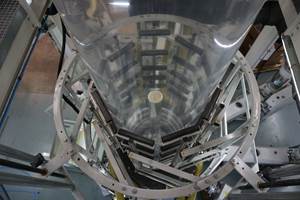Employee Instability and Company Profits
How investing in your workforce creates employer stability.

Employers are constantly looking for ways to increase productivity and motivation while improving the bottom line. Over the years, I have read a couple of books on how investing in your workforce creates employer stability.
In The Good Jobs Strategy by Zeynep Ton, Ton shows how operational excellence calls for sustainable wages, employee benefits, and nonerratic schedules. Ton writes that you can pay a livable wage with benefits and still keep costs and prices low. She references the successful business practices of a handful of companies that have chosen to make employees a top priority and are recognizing lower costs, higher profits, and greater customer satisfaction.
Jody Heymann, in Profit at the Bottom of the Ladder, demonstrates through various examples that if you invest in your entry-level, lower-wage employees, you will see lower costs, increased profits, less turnover, and higher motivation.
In addition, my book, Workplace Stability, argues that by understanding the environments of employees who live in daily instability and daily stability and how individuals in each environment spend their time, you can better support your employees, which in turn supports and stabilizes your business.
What can life (or a typical day) look like for one who lives in daily instability? In previous blog posts, I have defined daily instability as not having resources for today, let alone for tomorrow. When an employee lives in this type of environment, the mindset is about making it through the day; solving today’s problems; relying on relationships with neighbors, families, and tribe; and just plain survival.
Such a life is characterized by a combination of multiple jobs (not careers), transportation issues, childcare issues, elder support, irregular and possibly inconsistent hours, and appointments with agencies that support families with food, utility, housing, physical and mental health, and safety needs. Now, do you have a better understanding of why life might get in the way of work? The question then becomes: What supports can a business provide that stabilize employees while also stabilizing the company? How can we do business differently to get the desired results we are looking for?
In the Workplace Stability workshop, we discuss what solutions there might be to address food insecurity, transportation, childcare, benefits, and more. Are we asking you to lower your standards? No. But by making changes for this employee demographic, you will find that you stabilize your business, as well as your employees.
This employee demographic is not going to change. Finding ways to stabilize and leverage your diverse workforce can be a major competitive advantage. While other businesses stay on the hire/fire treadmill, you can boost profits and productivity by redesigning the way you do business. Based on employee demographics and the employees who are available for hiring, it is in our best interest to invest in our workforce, particularly our entry-level, lower-wage employees. This investment will stabilize your employee base, reduce hiring and training costs, improve morale and retention, and increase profits.
About the Author: Ruth K. Weirich, MBA, is an author, trainer, and management professional experienced in business operations efficiency and profitability. She is also a past president of aha! Process, an education and training company specializing in economic class issues. Contact: rkweirich@ahaprocess.com; ahaprocess.com.
Related Content
The Cost of High Employee Turnover in Injection Molding: Why Retention Matters
Starting in molding in 1993 and clocking in for nearly every job on the floor over the intervening decades, I’ve seen all sides of the hiring, training and retention process in the industry. Here are my thoughts on how to keep your most important asset — your people.
Read MoreTAPPI to Provide Film Education Program at PTXPO 2023
Second-ever PTXPO will feature a robust education program on flexible film, with more technical programming in the works.
Read MoreAmerican Injection Molding Institute Opens Mold Maintenance Classroom
The Beaumont subsidiary has opened the Mold Maintenance Center of Excellence classroom at its Erie, Pennsylvania, headquarters.
Read MoreShawnee State University’s Plastics Engineering Program Earns Accreditation
The Accreditation Board for Engineering & Technology certification makes the university’s program one of just four bachelor’s programs in the world with this designation and the only program of its kind in the state of Ohio.
Read MoreRead Next
For PLASTICS' CEO Seaholm, NPE to Shine Light on Sustainability Successes
With advocacy, communication and sustainability as three main pillars, Seaholm leads a trade association to NPE that ‘is more active today than we have ever been.’
Read MoreMaking the Circular Economy a Reality
Driven by brand owner demands and new worldwide legislation, the entire supply chain is working toward the shift to circularity, with some evidence the circular economy has already begun.
Read More























